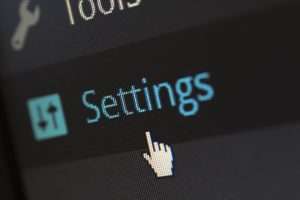Securing your computer systems should be a top priority for any computer owner. If you are a businesses owner, be mindful that internet hosted IT systems are constantly under attack and most of the time it goes unnoticed.
A third of Australian businesses have experienced a cyber crime of sorts. Losing data because of malware or malicious attacks cost Australian businesses in excess of $270 000 on average.
Don’t become another casualty, either get an IT Consultant or IT Support Company in to do an assessment or use our guide below:
Activities Used To Protect Business IT Systems
• Operating systems and applications patching
• Antivirus
• Backups
• Awareness
• Password security/management
• Two factor authentication when accessing external services
• Mobile device security
• Drive encryption technology
Operating System & Application Patching
Any software application including operating systems, firmware, or plugin installed on a system could provide the means for an attack. Only install those applications that you need to run your business and patch/update them regularly.
Many software vendors provide patches and updates to their supported products in order to correct security concerns and to improve functionality. Ensure that you know how to update and patch all software on each device you own or use.
Recommendation: Incorporate automated patch management software. This option allows remote monitoring of devices and maintain up to date patching for operating systems and applications.
Antivirus
Malware (short for Malicious Software or Malicious Code) is computer code written to steal or harm. It includes viruses, spyware, and ransomware.
Sometimes malware only uses up computing resources (e.g. memory), but other times it can record your actions or send your personal and sensitive information to cyber criminals.
Install, use, and regularly update anti-virus and anti-spyware software on every device used in your business (including computers, smart phones, and tablets).
Recommendation: Setup centralised antivirus management and monitoring.
Backups
Probably the most important component to recover from malicious attacks. Backups will let you restore data in case of hardware or software failure, an employee accidentally deletes files, or a malicious program infects your system.
Conduct a full, encrypted backup of the data on each device used in your business at least once a day. Store these backups away from your device location in a protected place so that if something happens your data is safe.
Recommendation: All relevant business data is selected for backup and ensure backup application schedule is enabled for daily backup. Do monthly checks to ensure new business data is selected.
Awareness
The first step to protecting an organisation from a security breach is to educate the employees because they are at a high risk of a cyberattack.
Recommendation: Each employee to do a Cyber security awareness training course
Password Management & Security
Create unique passwords that that use a combination of words, numbers, symbols, and both upper- and lower-case letters. Pick long complex passwords, at least 12 characters in length. DO NOT use common dictionary words, a name or a sequence of numbers.
Recommendation: Use a password manager, they make it easy for you to use long, complex, unique passwords across different sites and services, with no memory burden.
Two Factor Authentication
Two Factor Authentication, also known as two step verification or TFA (as an acronym), is an extra layer of security that is known as “multi factor authentication” that requires not only a password and username but also something that only, and only, that user has on them, i.e. a piece of information only they should know or have immediately to hand – such as a physical token or verification by email, telephone or text message.
Recommendation: Enable two factor authentication on all services.
Mobile Device Security
If your mobile device is unsecured and it is lost or stolen: It could be used to access your money or steal your identity using information stored on your device.
Recommendation: Set a password, Personal Identification Number (PIN), pass-code, gesture or fingerprint that must be entered to unlock the device. Install reputable antivirus. Use your device’s automatic update feature to install new application and operating system updates as soon as they are available.
Leave Bluetooth turned off or in unrecoverable mode (hidden) when you are not using it. Ensure your device does not automatically connect to new networks without your confirmation.
Enable the remote locking and/or wiping functions, if your device supports them.
Do not save passwords or PINs as contacts on your phone or tablet. Enable device encryption to protect personal data stored on the device where possible. Check the privacy permissions carefully when installing new apps on your device and only install apps from reputable vendors.
Where possible, make apps or profiles private and password protected. Ensure you thoroughly remove personal data from the device before selling or recycling it.
Drive Encryption
Disk encryption is a technology which protects information by converting it into unreadable code that cannot be deciphered easily by unauthorized people.
Disk encryption uses disk encryption software or hardware to encrypt every bit of data that goes on a disk or disk volume. It is used to prevent unauthorized access to data storage.
Recommendation: Use the built in drive encryption software that is available on your device to encrypt all data drives/volumes. The drive encryption on Windows is called “Bitlocker”. For Mac use “FileVault”




